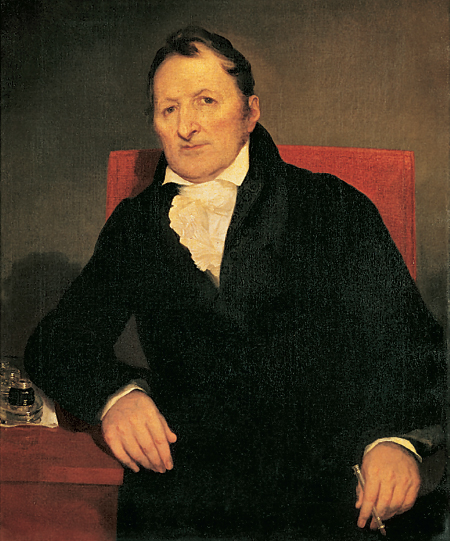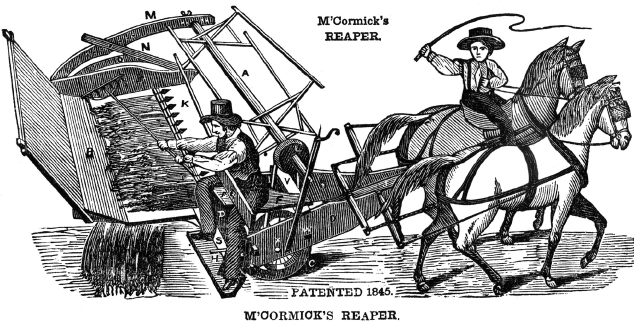America’s History: Printed Page 290
America: A Concise History: Printed Page 263
America’s History: Value Edition: Printed Page 254
American Mechanics and Technological Innovation

By the 1820s, American-born artisans had replaced British immigrants at the cutting edge of technological innovation. Though few mechanics had a formal education, they commanded respect as “men professing an ingenious art.” In the Philadelphia region, the remarkable Sellars family produced the most important inventors. Samuel Sellars Jr. invented a machine for twisting worsted woolen yarn to give it an especially smooth surface. His son John improved the efficiency of the waterwheels powering the family’s sawmills and built a machine to weave wire sieves. John’s sons and grandsons ran machine shops that turned out riveted leather fire hoses, papermaking equipment, and eventually locomotives. In 1824, the Sellars and other mechanics founded the Franklin Institute in Philadelphia. Named after Benjamin Franklin, whom the mechanics admired for his work ethic and scientific accomplishments, the institute published a journal; provided high-school-level instruction in chemistry, mathematics, and mechanical design; and organized exhibits of new products. Craftsmen in Ohio and other states established similar institutes to disseminate technical knowledge and encourage innovation. Between 1820 and 1860, the number of patents issued by the U.S. Patent Office rose from two hundred to four thousand a year.
American craftsmen pioneered the development of machine tools — machines that made parts for other machines. A key innovator was Eli Whitney (1765–1825), the son of a middling New England farm family. At the age of fourteen, Whitney began fashioning nails and knife blades; later, he made women’s hatpins. Aspiring to wealth and status, Whitney won admission to Yale College and subsequently worked as a tutor on a Georgia cotton plantation. Using his expertise in making hatpins, he built a simple machine in 1793 that separated the seeds in a cotton boll from the delicate fibers, work previously done slowly by hand. Although Whitney patented his cotton engine (or “gin,” as it became known), other manufacturers improved on his design and captured the market.
Still seeking his fortune, Whitney decided in 1798 to manufacture military weapons. He eventually designed and built machine tools that could rapidly produce interchangeable musket parts, bringing him the wealth and fame he had long craved. After Whitney’s death in 1825, his partner John H. Hall built an array of metalworking machine tools, such as turret lathes, milling machines, and precision grinders.
Technological innovation now swept through American manufacturing. Mechanics in the textile industry invented lathes, planers, and boring machines that turned out standardized parts for new spinning jennies and weaving looms. Despite being mass-produced, these jennies and looms were precisely made and operated at higher speeds than British equipment. The leading inventor was Richard Garsed: he nearly doubled the speed of the power looms in his father’s Delaware factory and patented a cam-and-harness device that allowed damask and other elaborately designed fabrics to be machine-woven. Meanwhile, the mechanics employed by Samuel W. Collins built a machine for pressing and hammering hot metal into dies (cutting forms). Using this machine, a worker could make three hundred ax heads a day — compared to twelve using traditional methods. In Richmond, Virginia, Welsh- and American-born mechanics at the Tredegar Iron Works produced great quantities of low-cost parts for complicated manufacturing equipment. As a group of British observers noted admiringly, many American products were made “with machinery applied to almost every process … all reduced to an almost perfect system of manufacture.”

As mass production spread, the American Industrial Revolution came of age. Reasonably priced products such as Remington rifles, Singer sewing machines, and Yale locks became household names in the United States and abroad. After winning praise at the Crystal Palace Exhibition in London in 1851 — the first major international display of industrial goods — Remington, Singer, and other American firms became multinational businesses, building factories in Great Britain and selling goods throughout Europe. By 1877, the Singer Manufacturing Company controlled 75 percent of the world market for sewing machines.
TRACE CHANGE OVER TIME
Question
What new types of products came out of American factories by the 1840s and 1850s?